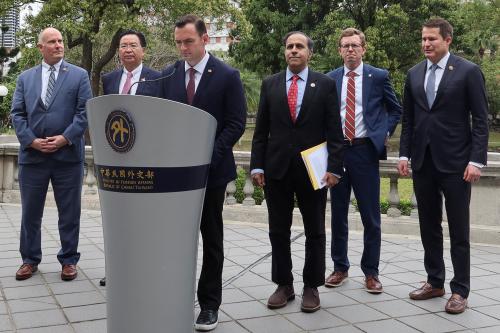Introduction:
The People’s Republic of China (PRC) has been troubled of late by widespread social unrest, slowing economic growth, and rampant official corruption as revealed by the Bo Xilai scandal. Less obvious to the outside world, however, have been the two sharply contrasting and controversial perspectives on the country’s near- to medium-term future that are now locked in mutual contention. These two rival scenarios reflect fundamentally different assessments of the socioeconomic situation and likely political trajectory of the world’s most populous country.
The first scenario envisions an abrupt bottom-up revolution. This assessment has recently generated much heated intellectual and political debate in the PRC. In December 2011, the thirty-year-old best-selling author Han Han (China’s most popular blogger whose site has registered well over 580 million hits) posted a now-famous essay titled “On Revolution.” Although Han argues that “revolution is hardly a good option for China,” his intriguing view of the choice between reform and revolution has pointedly reflected—and greatly enhanced—the public awareness of the risk of revolution in the country.
Additionally, one of the most popular books in PRC intellectual circles today is the Chinese translation of Alexis de Tocqueville’s 1856 classic The Old Regime and the Revolution. One frequently quoted passage is Tocqueville’s argument that revolutions usually occur not when the old regime resists change, but rather when it begins to attempt reform only to find expectations outstripping any possible rate of improvement.
The second scenario is reform from above, which Chinese Communist Party (CCP) elites often refer to as “top-level reform” or the “top-level design of reform” (gaige de dingceng sheji). The latter term was first heard at a top CCP leadership meeting in October 2010. It is related to the leaders’ newfound understanding that China is now in “deep water” with regard to reform, and can no longer afford to “cross the river by feeling the stones,” as the Chinese expression goes. Improvised reform, in short, needs to give way to a more methodical and more profound set of changes. Moreover, with so many of China’s present-day socioeconomic problems growing out of impasses and obstacles within the political system, basic political reform will have to be part of the agenda as well.
According to those who call for top-level reform, China needs better coordination between socioeconomic policy and political development, along with structural changes that are more coherent. The older, bottom-up approach that stresses grassroots elections must yield, they say, to a new roadmap that includes intra-CCP elections to choose national-level Party leaders, enhanced institutional checks and balances, and judicial reform.
It is critically important for foreign analysts to grasp the ongoing Chinese discourse in three key areas: 1) the impact of the Bo Xilai crisis on China’s political trajectory, 2) possible triggers for sociopolitical uprisings and initiatives, and 3) institutional safeguards with which the CCP leadership may open the way to systemic change. Foreign analysts need to rethink the thesis of “authoritarian resilience,” a predominant view in overseas studies of Chinese politics which argues that Chinese authoritarianism is “resilient” or “strong.” This view underestimates both the inherent vulnerability in the one-party system and the growing resentment that the public feels over CCP leaders’ enormous power and wealth.


Commentary
China at the Tipping Point: Top-Level Reform or Bottom-Up Revolution?
January 11, 2013